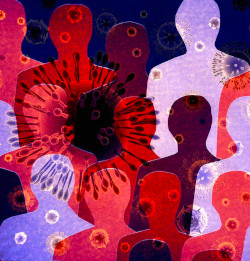 Image source: Peace at Last (blog)
Image source: Peace at Last (blog)
The sword did not beat itself into the plowshare, nor did it then smelt itself down into the boiler of the steam engine. People thought of doing that, and then decided to do it. It’s the people’s motivations that are the puzzle, not the plowshare’s.
I have been doing a relative deep dive into Marx of late, reading some primary works (On the Jewish Question and The German Ideology) as well as a good secondary work (Giddens, 1995; Morrison, 2006) that translates him for present-day reader. As always, my efforts are to attempt an integrated understanding of the things I am reading in the context my developing understanding of how social science attempts to make sense of the world. Essentially, what I have been trying to figure out with these readings is what is meant by ‘materialism’, since there are a number of different takes on it. This interest is spurred by the notion of ‘materialism vs. idealism’ as one of the fundamental divisions within social science.
I am coming to the conclusion that this divide cannot be one of the most fundamental divisions in social science, despite the pedigree of the debate. Both terms – materialism and idealism – are much too amorphous to be made sense of. Each side to this debate can either win or lose by virtue of how broadly or narrowly the concepts of ‘idea’ and ‘matter’ are defined. The tendency for definitional gerrymandering makes this debate fruitless. Furthermore, ‘materialism’ is in essence just a stalking-horse for other concepts, such as rationalism, objectivity, and the stable preference for wealth and security.
Below the fold, I explore the various materialisms and materialism’s alleged conceptual opposite, idealism – which in international relations theory is often called ‘Constructivism’. I argue that materialism, as an approach to understanding human developments, basically exists to provide a simple objective means of deducing people’s and states’ interests. However, that relatively useful notion of materialism is also made up of separate assumptions, each of which is a better guide to understanding what is really at stake in the materialism vs. idealism debate. The materialism-idealism debate is really about the contradiction between objectivity and subjectivity, and the degree to which people pursue goals or behave as they are supposed to behave. Finally, the question of materialism vs. idealism is wrapped up in the question of how society is mutable.





